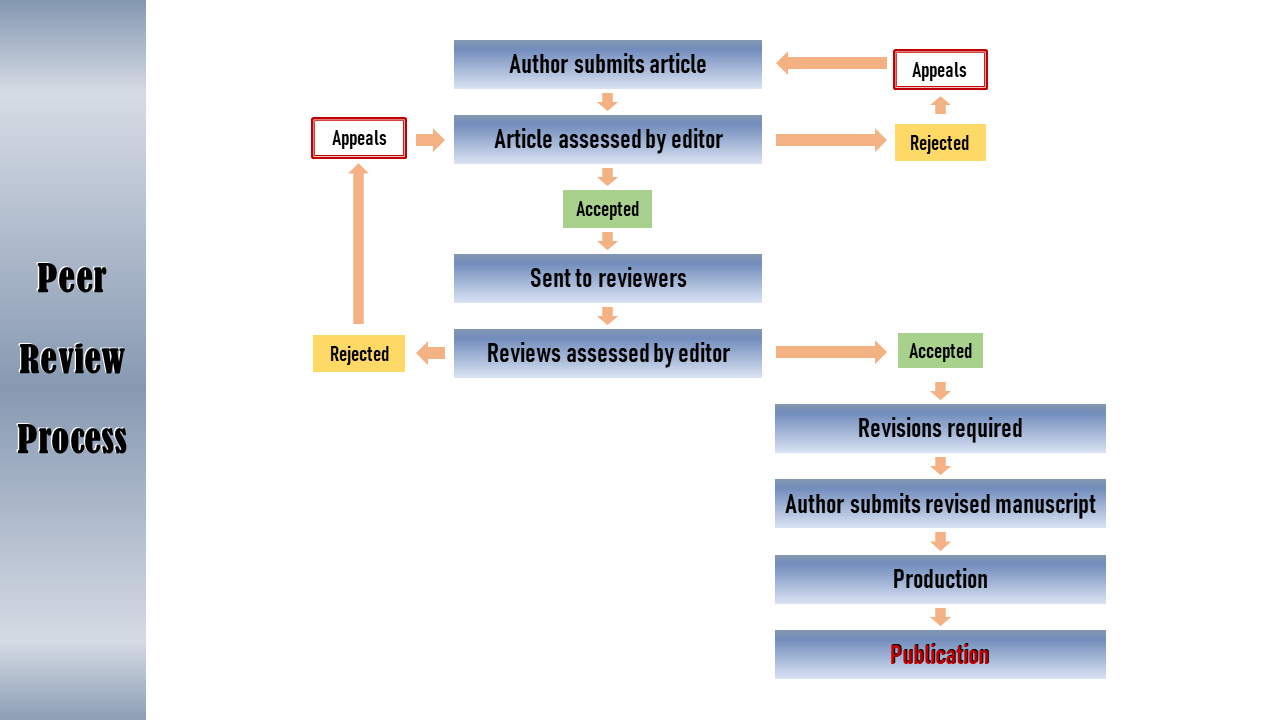
Peer Review Process

Submissions are assessed by the Editorial Board and are subject to external peer review using the double blind method whereby the authors are blinded to the identity of the reviewers and vice versa.
- Submission of Paper
The corresponding or submitting author submits the paper to the journal. This is usually via an online system. Occasionally, journals may accept submissions by email.
- Editorial Office Assessment
The journal checks the paper’s composition and arrangement against the journal’s Author Guidelines to make sure it includes the required sections and stylizations. The quality of the paper is not assessed at this point.
- Appraisal by the Editor-in-Chief (EIC)
The EIC checks that the paper is appropriate for the journal and is sufficiently original and interesting. If not, the paper may be rejected without being reviewed any further.
- Invitation to Reviewers
The handling editor sends invitations to individuals he or she believes would be appropriate reviewers.
- Response to Invitations
Potential reviewers consider the invitation against their own expertise, conflicts of interest and availability. They then accept or decline. If possible, when declining, they might also suggest alternative reviewers.
- Review is Conducted
The reviewer sets time aside to read the paper several times. The first read is used to form an initial impression of the work. If major problems are found at this stage, the reviewer may feel comfortable rejecting the paper without further work. Otherwise they will read the paper several more times, taking notes so as to build a detailed point-by-point review. The review is then submitted to the journal, with a request for revision (usually flagged as either major or minor) before it is reconsidered.
- Journal Evaluates the Reviews
The handling editor considers all the returned reviews before making an overall decision. If the reviews differ widely, the editor may invite an additional reviewer so as to get an extra opinion before making a decision.
- The Decision is Communicated
The editor sends a decision email to the author including any relevant reviewer comments. Whether the comments are anonymous or not will depend on the type of peer review that the journal operates.
- Appeals
Authors who feel they have grounds to appeal a rejection decision should send a rebuttal letter to the editorial office, detailing the reasons for the appeal. Rebuttals will be considered by the Editor-in-Chief, often in consultation with the Editorial Board Member who handled the paper. Decisions on appeals are final.






